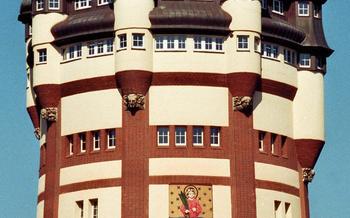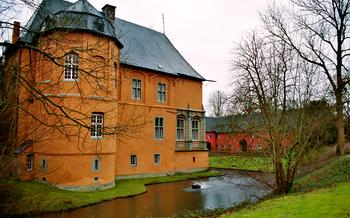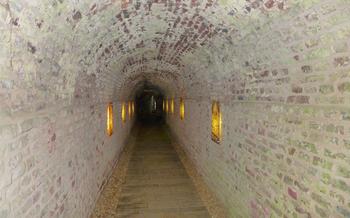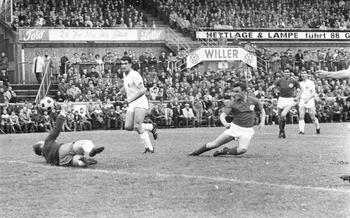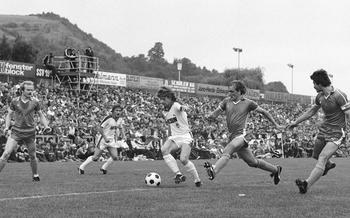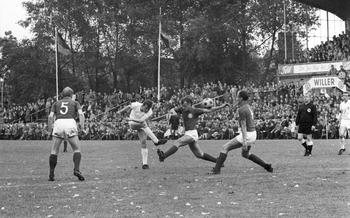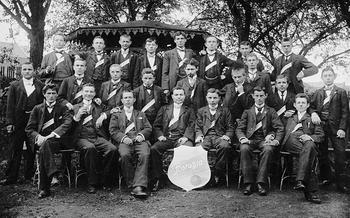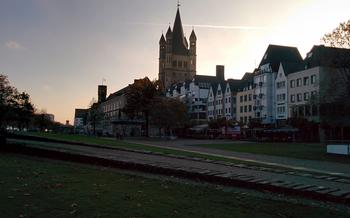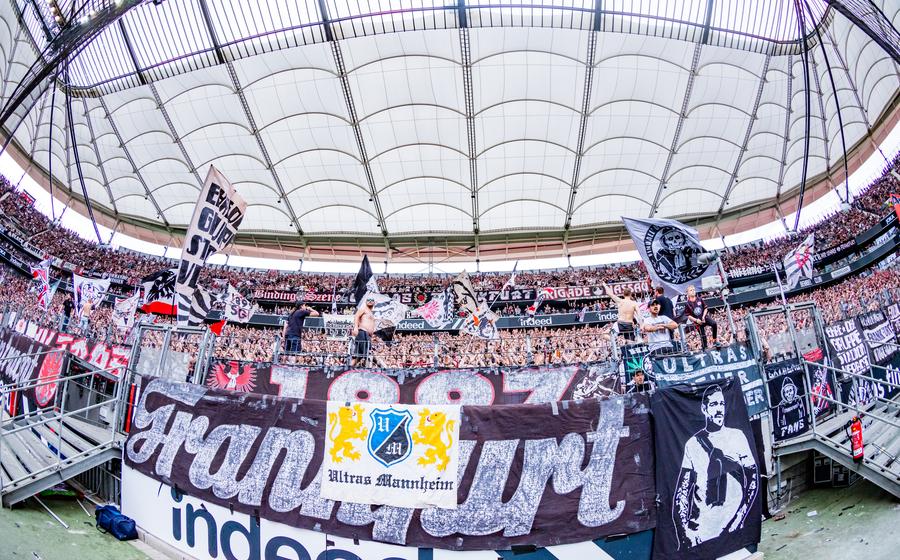
Flower Clock
- The Flower Clock: A Unique Attraction in Mönchengladbach
- Location: Where to Find the Flower Clock
- Best Time to Visit: Capturing the Floral Beauty
- Exploring the Surroundings: Mönchengladbach's Charms
- History of the Flower Clock: A Story of Ingenuity
- How the Clock Works: A Masterpiece of Engineering
- Changing Floral Displays: A Seasonal Spectacle
- Maintenance and Care: Preserving the Floral Masterpiece
- Symbolism and Meaning: Beyond Timekeeping
- Photographing the Flower Clock: Capturing the Moment
- Local Events and Celebrations: The Flower Clock as a Backdrop
- Guided Tours: Unveiling the Secrets of the Clock
- Souvenirs and Mementos: Taking a Piece of the Flower Clock Home
- Accessibility for All: Inclusive Experiences
- Insider Tip: The Secret Garden
The Flower Clock: A Unique Attraction in Mönchengladbach
The Flower Clock in Mönchengladbach, Germany, is a remarkable feat of engineering and horticulture that attracts visitors from around the world. Conceived in 1953 and completed in 1958, this one-of-a-kind timepiece is a stunning display of precision, beauty, and innovation. The clock's unique design features a large, rotating dial with a diameter of 10 meters, adorned with over 10,000 colorful flowers. The flowers are arranged in intricate patterns that change with the seasons, creating a vibrant and ever-evolving spectacle. The clock's mechanism is a marvel of engineering, ensuring accurate timekeeping while simultaneously showcasing the beauty of nature's artistry.
Location: Where to Find the Flower Clock
The Flower Clock is conveniently located in the heart of Mönchengladbach, Germany, at Bismarckstraße 96, 41061 Mönchengladbach. Situated in the Bismarckstraße Park, it is surrounded by lush greenery and well-maintained gardens. The clock is easily accessible by foot, bicycle, or public transportation.
For those arriving by car, parking spaces are available nearby, ensuring a hassle-free visit. The clock's central location makes it an ideal starting point for exploring other attractions in Mönchengladbach, such as the Abteiberg Museum, the Rheydt Castle, and the Botanical Garden.
Whether you choose to walk, cycle, or drive, the Flower Clock is a must-see attraction that should not be missed during your visit to Mönchengladbach. Its vibrant colors and intricate design will undoubtedly leave a lasting impression.
Best Time to Visit: Capturing the Floral Beauty
The flower clock in Mönchengladbach truly comes to life during the warmer months, from spring to early fall. This is when the flowers are in full bloom, creating a vibrant and colorful display. For the best experience, aim to visit the clock on a sunny day when the colors are most vivid.
Mornings are generally an ideal time to visit, as the air is still cool and the sunlight casts a soft glow on the flowers. If you prefer a quieter atmosphere, consider visiting during the weekdays, as weekends tend to attract more crowds.
Weather conditions play a crucial role in enhancing the experience. While rain can add a touch of charm to the scenery, it's best to avoid visiting during heavy downpours, as the flowers may appear wilted or damaged. A light drizzle, however, can create a magical ambiance, with the water droplets glistening on the petals.
Exploring the Surroundings: Mönchengladbach's Charms
The Flower Clock is strategically situated in the heart of Mönchengladbach, surrounded by a tapestry of attractions that further enhance the city's allure. A short stroll from the clock, visitors can immerse themselves in the urban delights of the Old Town, where cobblestone streets lead to charming boutiques, cozy cafés, and historic landmarks. The Old Town Hall, with its intricate Renaissance architecture, stands as a testament to the city's rich past.
For art enthusiasts, the Museum Abteiberg offers a diverse collection of modern and contemporary art, housed in a striking building that blends modern design with historical elements. The museum's collection includes works by renowned artists such as Yves Tanguy, Max Ernst, and Gerhard Richter.
Nature lovers can find respite and tranquility at the Volksgarten, a sprawling park that offers a picturesque escape from the city's hustle and bustle. With its lush greenery, serene ponds, and colorful flowerbeds, the park provides a delightful retreat for those seeking a moment of peace and relaxation.
By combining a visit to the Flower Clock with these nearby attractions, visitors can create a comprehensive and enriching itinerary that showcases the diverse charms of Mönchengladbach, ensuring a memorable and fulfilling experience.
History of the Flower Clock: A Story of Ingenuity
The Flower Clock in Mönchengladbach is a testament to human ingenuity and innovation. Its creation was the brainchild of master clockmaker Wilhelm Kox, who was inspired by the beauty of blooming flowers and the precision of timekeeping. In 1953, he set out to combine these two passions, envisioning a clock that would not only tell time but also showcase the wonders of nature.
Overcoming numerous technical challenges, Kox and his team worked tirelessly to bring his vision to life. They meticulously engineered the clock's intricate mechanisms, ensuring that the hands moved in perfect synchrony with the changing positions of the flowers. The clock's design required innovative solutions to withstand the elements and maintain accuracy throughout the year, a testament to Kox's exceptional craftsmanship.
The Flower Clock was unveiled to the public in 1955 and quickly became a symbol of Mönchengladbach's ingenuity and love for horticulture. It has since received numerous awards and accolades, including the prestigious Guinness World Record for being the largest flower clock in the world. The clock's unique design and engineering prowess continue to captivate visitors from around the globe, standing as a testament to the power of human creativity and the beauty of nature.
How the Clock Works: A Masterpiece of Engineering
The Flower Clock in Mönchengladbach is not just a beautiful timepiece; it is also a marvel of engineering. The clock's intricate mechanisms and precise operation are a testament to the ingenuity and skill of its creators.
The clock's movement is powered by a sophisticated system of gears and levers that work in harmony to rotate the hands and display the time. The gears are made of durable materials, such as brass and steel, to ensure longevity and accuracy. The clock's precision is further enhanced by a unique escapement mechanism that regulates the release of energy from the mainspring, ensuring a smooth and consistent movement of the hands.
The clock's most striking feature is its ability to display the time using flowers. Each minute, a new flower opens, while the previous one closes. This is achieved through a complex system of levers and linkages that are connected to the clock's movement. The flowers are arranged in a spiral pattern on the clock face, creating a mesmerizing display that changes throughout the day.
The Flower Clock's engineering prowess is not limited to its mechanical components. The clock is also equipped with a sophisticated electrical system that controls the lighting and irrigation of the flowers. This system ensures that the flowers receive the optimal amount of light and water, allowing them to bloom and thrive throughout the year.
The Flower Clock's engineering achievements have been recognized worldwide. It has received numerous awards and accolades for its innovative design and precision. The clock stands as a testament to the ingenuity and skill of its creators, and continues to fascinate and inspire visitors from around the world.
Changing Floral Displays: A Seasonal Spectacle
The flower clock is not just a timekeeping marvel but also a showcase of horticultural artistry. Throughout the year, the clock's face undergoes a transformation, adorned with a variety of flowers that create vibrant and eye-catching displays. Each season brings its own unique charm to the clock.
In spring, the clock bursts into life with a riot of colors, featuring tulips, daffodils, and hyacinths. The delicate petals and sweet fragrances create a sense of renewal and optimism. As summer approaches, the clock's face transforms into a tapestry of roses, lilies, and geraniums. The rich hues and heady scents evoke a sense of romance and tranquility.
Autumn brings a touch of warmth and nostalgia to the clock with its display of chrysanthemums, dahlias, and marigolds. The golden and bronze tones of these flowers create a stunning contrast against the backdrop of the changing leaves. Winter is no less enchanting, as the clock is adorned with evergreens, hellebores, and cyclamen. These hardy flowers brave the cold and bring a touch of cheer to the winter landscape.
Thematic designs and patterns are often incorporated into the clock's displays, adding another layer of visual interest. During special occasions such as holidays or festivals, the clock may feature patriotic colors or symbols, creating a sense of unity and celebration.
Maintenance and Care: Preserving the Floral Masterpiece
The Flower Clock in Mönchengladbach requires ongoing maintenance to ensure its continued operation and floral splendor. A dedicated team of horticulturists and engineers works tirelessly behind the scenes to keep this unique timepiece in top condition.
The horticulturists are responsible for selecting and caring for the flowers that adorn the clock. They carefully choose varieties that are suited to the local climate and that will bloom in succession throughout the year, ensuring a continuous display of color and beauty. The flowers are planted in special soil mixtures and receive regular watering, fertilization, and pest control.
The engineers, on the other hand, maintain the mechanical components of the clock. They regularly inspect and lubricate the gears, motors, and other parts to ensure smooth operation. They also monitor the clock's accuracy and make any necessary adjustments to keep it synchronized with the official time.
This collaboration between horticulturists and engineers is essential for preserving the Flower Clock as a functional and visually stunning landmark. Their dedication and expertise ensure that visitors can continue to enjoy this unique attraction for generations to come.
Symbolism and Meaning: Beyond Timekeeping
The flower clock in Mönchengladbach holds a profound cultural significance, extending beyond its role as a timekeeping device. It has become an iconic symbol of the city, representing precision, beauty, and innovation. The clock's unique design and engineering prowess have garnered international recognition, making it a source of pride for the Mönchengladbach community.
As a symbol of precision, the flower clock stands as a testament to German engineering excellence. Its intricate mechanics and accurate timekeeping capabilities reflect the city's reputation for quality and efficiency. The clock's floral displays, meticulously arranged to create vibrant patterns and designs, showcase the artistry and attention to detail that characterize Mönchengladbach's craftsmanship.
The flower clock also embodies the city's commitment to innovation. Its creators pushed the boundaries of engineering and horticulture to bring this unique concept to life. The clock's ability to adapt to changing seasons and display a variety of floral designs demonstrates Mönchengladbach's embrace of progress and its willingness to explore new ideas.
Beyond its symbolic meaning, the flower clock has played a significant role in promoting tourism and civic pride in Mönchengladbach. The clock's unique charm and visual appeal have attracted visitors from around the world, contributing to the city's reputation as a vibrant and innovative destination. For residents of Mönchengladbach, the flower clock serves as a source of pride and a reminder of their city's rich cultural heritage and commitment to excellence.
Photographing the Flower Clock: Capturing the Moment
The Flower Clock in Mönchengladbach presents a unique opportunity for photography enthusiasts to capture the beauty of nature and precision engineering in a single frame. To make the most of your photographic experience, consider the following tips:
-
Choose the Right Angle: Position yourself directly in front of the clock to capture its full grandeur. Alternatively, explore different angles to create dynamic compositions that incorporate the surrounding landscape.
-
Consider the Lighting: The best time to photograph the clock is during the golden hours of sunrise and sunset. The warm, diffused light adds depth and dimension to the flowers, enhancing their vibrant colors.
-
Incorporate the Surroundings: Don't limit your shots to the clock alone. Include elements of the surrounding park, such as the lush greenery, colorful flower beds, or historic buildings, to create a sense of context and depth.
-
Use a Tripod: To ensure sharp and steady shots, especially in low-light conditions, use a sturdy tripod. This will minimize camera shake and allow you to capture the intricate details of the clock's floral displays.
-
Experiment with Different Lenses: Depending on your desired perspective, experiment with different lenses. A wide-angle lens can capture the entire clock and its surroundings, while a telephoto lens can focus on specific details and patterns.
-
Play with Shutter Speed: To convey a sense of movement and dynamism, experiment with different shutter speeds. A slow shutter speed can blur the motion of the clock's hands, creating a sense of fluidity, while a fast shutter speed can freeze the action, capturing the clock's precision.
Local Events and Celebrations: The Flower Clock as a Backdrop
The flower clock is not just a timepiece; it serves as a vibrant backdrop for various local events and celebrations throughout the year. During the summer months, the area surrounding the clock transforms into a lively festival ground, hosting music concerts, art exhibitions, and cultural performances. The clock becomes the centerpiece of these events, adding a touch of elegance and charm to the festivities.
One of the most popular events is the annual Flower Festival, held in late spring or early summer. During this festival, the flower clock is adorned with even more elaborate floral displays, creating a truly breathtaking sight. Visitors can enjoy live music, food stalls, and family-friendly activities while marveling at the intricate designs and vibrant colors of the clock.
The flower clock also plays a significant role in community gatherings and celebrations. It serves as a meeting point for locals and tourists alike, who come together to celebrate special occasions or simply enjoy the beauty of the clock. Whether it's a national holiday, a local fair, or a charity event, the flower clock provides a unique and memorable setting for these special moments.
Guided Tours: Unveiling the Secrets of the Clock
For those seeking a deeper understanding of the Flower Clock's intricate workings and fascinating history, guided tours offer an unparalleled opportunity. Led by knowledgeable guides, these tours delve into the clock's conception, design, and engineering marvels. Visitors will gain insights into the challenges faced during its construction and the innovative solutions employed to overcome them.
Advance booking is highly recommended to secure a spot on a guided tour, especially during peak tourist seasons. Tours typically last for approximately 30 minutes, providing ample time to explore the clock's mechanisms, learn about its significance, and ask questions.
Whether you're a history buff, an engineering enthusiast, or simply curious about this unique attraction, a guided tour of the Flower Clock is an enriching experience that will leave you with a newfound appreciation for this iconic timepiece.
Souvenirs and Mementos: Taking a Piece of the Flower Clock Home
The Flower Clock in Mönchengladbach is a renowned attraction that draws visitors from far and wide. Naturally, many visitors want to take a piece of this unique experience back home with them. The city has a range of souvenir shops and gift stores that cater to this demand, offering a variety of items inspired by the flower clock.
From postcards and magnets featuring vibrant images of the clock to miniature replicas that can be displayed as a cherished keepsake, there are options to suit every taste and budget. For those who want something truly special, there are even limited-edition prints and artwork depicting the flower clock, created by local artists who have been inspired by its beauty.
Whether you're looking for a small token to remind you of your visit or a unique gift for a friend or family member, the souvenir shops near the Flower Clock have something for everyone. Take a piece of this iconic attraction home with you and keep the memories of your visit alive.
Accessibility for All: Inclusive Experiences
The Flower Clock in Mönchengladbach is committed to providing an inclusive and welcoming experience for all visitors, regardless of their abilities. Wheelchair accessibility is ensured throughout the site, with designated parking areas close to the clock. Visitors with visual impairments can take advantage of audio guides and Braille signage to learn about the history and operation of the clock. The surrounding park also features accessible pathways, allowing everyone to enjoy the beauty of the flowers and the serene ambiance of the gardens.
Insider Tip: The Secret Garden
Within a stone's throw of the bustling flower clock lies a hidden gem known as the Secret Garden. This enchanting spot offers a tranquil respite from the urban surroundings, inviting visitors to immerse themselves in a world of vibrant blooms and serene tranquility. Wander through the winding paths, discovering hidden nooks and corners adorned with colorful flowers, delicate fragrances, and the gentle sound of water features. The Secret Garden is a haven for those seeking a moment of peace and tranquility amidst the vibrant energy of Mönchengladbach. Whether you're a nature enthusiast, a photography buff, or simply someone seeking a moment of respite, the Secret Garden is a must-visit destination that promises to leave you feeling refreshed and rejuvenated.

